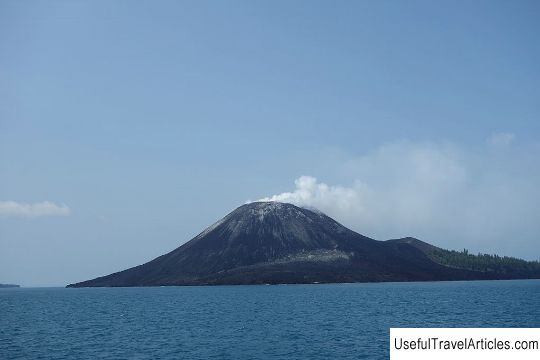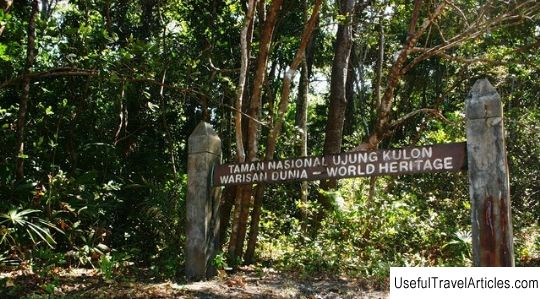Krakatoa volcano in Indonesia
Rating: 8,3/10 (961 votes)  Krakatoa volcano is one of the few natural attractions in Indonesia that does not need an introduction. Krakatoa is located between the islands of Java and Sumatra, in the Sunda Strait. Krakatoa is a typical example of a stratovolcano, that is, a volcano that has a conical shape and is composed of numerous layers of lava and ash. Stratovolcanoes also tend to erupt extremely violently and quite often. According to research, Krakatoa has erupted more than a dozen times over the long period of its existence. The largest eruption, according to scientists, occurred in 535 and led to global changes in the earth's climate; it is also believed that during the cataclysm, part of the land went into the ocean, thereby forming the Sunda Strait. The closest to our time eruption of Krakatoa occurred in 1883 and led to the destruction of almost the entire territory of the island. The volcano woke up in early May and a month later the so-called"underground chamber" of Krakatoa was empty, and all rocks were carried to the surface by eruptions, which led to a colossal explosion that occurred on the morning of August 27. The column of ash thrown into the air reached 30 km, and a day later most of the island collapsed into the ocean under its own pressure. The interaction of ocean water with hot magma caused a monstrous pyroclastic flow about a kilometer high, moving towards Sumatra at great speed and causing almost instantaneous death of two thousand people. The breed, which was composed of Krakatoa, scattered within a radius of five hundred kilometers, and the column of ash and gas reached the mesosphere and within several years fell out over an area of 4 million km 2. Large amounts of ash remained in the atmosphere for a long time and caused an unusual color of the dawn. The scale of the catastrophe is difficult to describe: the explosion, whose power was 10,000 times higher than the power of the atomic explosion in Hiroshima, caused a 30-meter tsunami that destroyed about 300 settlements and took the lives of about 36,000 people. Since 1927, on In the place of Krakatoa, a new volcano began to"grow", which it was decided to name"Anak-Krakatau", which means"child of Krakatau". Since 1950, Anak has grown by about 6.8 meters per year and is currently 813 meters high. The newborn"baby" regularly erupts (the last eruption took place in 2011) and is of great interest to science: the process of"development" of a new volcano is extremely interesting, as it gives an idea of similar phenomena that took place millions of years ago. The legendary Krakatoa is no less popular among tourists, who are usually invited to inspect it from the sea for safety reasons. Anak-Krakatau is an active volcano: theoretically, an eruption can occur at any time, so local residents are forbidden to settle at a distance of less than 3 km from the fire-breathing mountain.    happening millions of years ago. The legendary Krakatoa is no less popular among tourists, who are usually invited to inspect it from the sea for safety reasons. Anak-Krakatau is an active volcano: theoretically, an eruption can occur at any time, so local residents are forbidden to settle at a distance of less than 3 km from the fire-breathing mountain. happening millions of years ago. The legendary Krakatoa is no less popular among tourists, who are usually invited to inspect it from the sea for safety reasons. Anak-Krakatau is an active volcano: theoretically, an eruption can occur at any time, so local residents are forbidden to settle at a distance of less than 3 km from the fire-breathing mountain.   happening millions of years ago. The legendary Krakatoa is no less popular among tourists, who are usually invited to inspect it from the sea for safety reasons. Anak-Krakatau is an active volcano: theoretically, an eruption can occur at any time, so local residents are forbidden to settle at a distance of less than 3 km from the fire-breathing mountain. happening millions of years ago. The legendary Krakatoa is no less popular among tourists, who are usually invited to inspect it from the sea for safety reasons. Anak-Krakatau is an active volcano: theoretically, an eruption can occur at any time, so local residents are forbidden to settle at a distance of less than 3 km from the fire-breathing mountain.   We also recommend reading Lore Lindou National Park in Indonesia Topic: Krakatoa volcano in Indonesia. |




